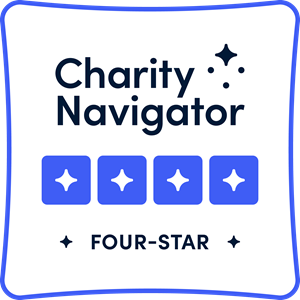Calling All Funders: It’s Time to Weave Our New Community Fabric
This post was originally published in eJewishPhilanthropy.
During the past few months, my colleagues and I have been thinking a lot about the community we want to see when we emerge from the COVID-19 pandemic. Our giving will support the evolutionary change in our Jewish communities, so it’s time to think differently about how our philanthropy shapes the fabric of our community.
My grandparents gave money to the Jewish community because it was expected of them, and because it was implicit in their Judaism that they should pass on some of whatever they had (large or small) to others in the Jewish community. Two generations later, we tend to not fund organizations in the traditional way; in fact, ‘tradition’ and ‘obligation’ are not values that generally motivate givers. Instead, we fund outcomes and want to know how far a dollar can go, and how sure we can be of our intended result.
I became a Jewish professional at a moment in time when our Jewish community ‘business’ models were changing. We no longer assume that people want to belong, to ‘pay a Jewish tax’ to a Federation or a JCC or a synagogue (or all three!). Instead of paying to belong to the community, we began to ask people to pay for the services they wanted: preschool, Hebrew school, adult education, camp, weddings, funerals, and everything in between. Unlike the older models of community support where everyone gave at their capacity and received the services they needed, we entered a more transactional model.
As the world opened to us as a people, and our Jewish identity became one of many facets of our sense of community, where and how we belong and participate has also expanded. In large part, this is wonderful. We are a part of diverse communities, and we gain great perspective from the expansive view. However, while we are immeasurably richer in some ways, we have also become fragmented as a Jewish community. Some of us are on paths so different than those of our parents and grandparents that we may not look back frequently to the trunk from which we branched off.
When faced with the beginning of the pandemic, I committed to keep paying for all the things that were on hold. We paid our house cleaner, we paid our babysitter, we paid the JCC for swim lessons and the gym and preschool. We paid for our Hebrew afterschool program, which became an occasional Zoom, and we put down deposits for programs that might never happen as expressions of our love for our community. Our registration fees turned into donations. We continued making donations to causes and institutions that are important to us including the Federation, our public school, and the local food bank. In my conversations as a philanthropy advisor, many of the people I spoke with were also committing to continuing this type of support. This break and isolation have surfaced new ideas for what I want for our community moving into the future.
I’ve come to realize that I really want to fund the valuable sense of belonging to the Jewish community. While my kids can learn to swim anywhere, this isolation has reminded me that I like that they are learning to swim in a place where when we finish up, we run into their preschool teachers and say Shabbat Shalom, where we walk out of the gym and into a Shabbat celebration. And if that is the world I wish to see, that is the world I need to fund.
But in truth, it goes beyond that. It needs to go beyond the tiny piece of community that my family needs, to thinking about what we need as a people. It isn’t just about my family needing a JCC, it is also about our community needing the right resources to support a full Jewish life and lifecycle for a diverse and vibrant community. And it is clear, that the spaces of belonging as they currently exist, do not fill the needs of our entire modern community.
I was on a webinar recently that addressed the risk of funding in this time. It is hard to know if the money will have the desired effect, or if the organization will survive this crisis. I’d like to change that narrative. I don’t think this is a risky time for funding. I think now, instead of funding outcomes, registrations, and participation, we need to reframe our thinking to funding people, ideas, and community. Our registration fees might not be funding lessons and memberships, but they are funding the very fabric of the world we want to see and to be a part of. With the piecemeal, fee-for-service participation that many of our Jewish lives have become, our community fabric has become threadbare. The time to weave it again is now.
A weaving loom – whether for a child or an artisan – employs warp and weft. The weft is the fiber that is drawn through, over and under the stationary yarn. The weft is frequently the most colorful, dynamic element, creating the dominant pattern you see at the end. But the warp is the steady, stationary yarn that creates the structure of the weaving. Without the warp, there is no fabric, nothing to hold the colorful pattern together. It is time to rebuild the warp strings of our community. We may need to choose new strings, or a new yarn, as it will not look the same. This is not a call to rebuild our community of fifty years ago. It is a call to find our new communal structure – one that is inclusive, thoughtful, and representative. And when we have picked our pattern and lined up our fibers, then we can look to everyone from large scale funders and foundations to people who might not call themselves philanthropists to fund it deeply, to support all of the beautiful, colorful strands that we want to weave.
This is our opportunity to remember what it feels like to support people, not things, community not services, and to build the strong ties that will support us for the coming generation.
What shall we weave together?

Debbie Tuttle Berkowitz is a Senior Philanthropy Advisor at the Federation.
Learn more about Federation Philanthropy Partners.


